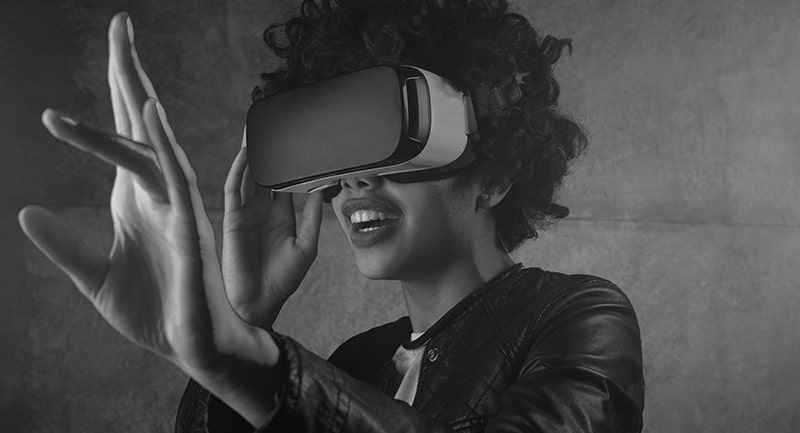The pandemic has impacted business, economies, and lives in a lot of ways, especially as a driver of digital transformation. The consequences have been significant in numerous industries, particularly for trade shows and other in-person events.
The endless postponements and cancellations of 2020 caused major damage for event organizers as well as exhibitors who could no longer take advantage of the best commercial channels to promote their products. Trade show organizers had no choice but to look to remote, digital solutions to continue their work.
Here’s an overview of the state of B2B trade shows, and some possible future scenarios.
The value of trade shows for B2B businesses
Trade shows play an important role for small-to-medium businesses, helping them pursue key goals like generating leads, growing brand awareness, and networking. There are numerous channels SMEs can use to work towards these goals, but trade shows offer a unique and powerful opportunity to invest in a singular approach.
Using the mantra “The right message at the right time to the right person via the right channel” trade shows can offer a very targeted and effective lead generation strategy that brings significant ROI for business goals.
For example, PPC ads might have a much lower cost per lead (CPL) than trade shows, but they don’t offer the same branding and networking opportunities. B2B businesses that have the most success with trade shows and marketing overall are those that track performance, and use these insights to test and optimize their strategy.
For B2B businesses, all marketing strategies must have a strong digital component. That said, long sales cycles and complex products make B2B marketing a “relationship marketing”, where building personal relationships is still very important.

That’s not saying relationships will be nurtured offline forever, especially as interactions become more digitized (VR viewers are one example that isn’t very widespread yet), but to date, there is still no technology that can totally replace in-person events.
The challenges of digital communication for events
Even before the pandemic, there were online services that promoted themselves as “virtual booths” and allowed companies to present their products. Now they have become commonplace, although not all virtual events have been equally successful.
Effectively communicating with your audience can be challenging in-person, let alone in a digital setting. It’s imperative to master the tools you’re using to succeed, even if you already have a track record of successfully engaging the public.
Some might think that communicating at an online event is like having your hands tied, but in reality, it’s a unique channel that offers different possibilities. To keep the audience engaged, you can use strategies that encourage interaction, taking the conversation from one-way to two-way, using live polls, open questions, breakout sessions, etc.

The future of trade shows as digital events
While online is the only option for many trade shows today, what remains to be seen is whether this will continue in the long run. Past trends suggest that it won’t. The tools organizers are using to digitize events have been around for years, but they never had the adoption rate or success of in-person events. There’s also no denying that the leads generated from in-person events are much higher quality than digital ones.
That said, it doesn’t take long for good digital ideas to take over their offline counterparts, as has already happened in many other industries. This just hasn’t happened with trade shows yet.
The hybrid potential
In the future of B2B, businesses won’t be replacing “traditional” strategies with digital ones but rather integrating them with each other. In-person encounters will always be essential for B2B markets, especially at the end of the conversion funnel (between marketing and sales). While it is true that in B2B, digital channels work well for prospecting, it is also true that a face-to-face visit is still an essential element in closing a sale, upselling and cross-selling. In short, the best deals are still closed over a meal, but digital is a great tool to support sales.
Trade shows are an opportunity for networking, which can lead to both commercial opportunities and partnerships with strategic suppliers. And this shouldn’t be limited only to during the event. Companies must prepare for the trade show months in advance on digital channels, trying to reach and interact with their potential customers. This must include a process that converts them from users to visitors and from IP addresses to contacts.
Instead of technology replacing in-person trade shows, it’ll become part of every aspect. The transformation has already begun, as interactive experiences are already common in trade show exhibits.
Technology also already plays a significant role in post-event activities. CRM and lead tracking tools can help businesses understand who came to their booth and from what channel, so they can optimize their online and offline strategies with a view to continuous improvement.
Looking towards the near future of trade shows
While the pandemic is still a major challenge hindering in-person events, some governments are experimenting with controlled group activities, opening up the possibility for trade shows to resume in some capacity. This presents a dilemma for both companies and event organizers.

While companies need to decide months in advance whether or not to participate in a trade show, visitors can afford the luxury of making a last-minute decision. So it’s difficult to predict what the turnout will be at these events.
That said, the return to frequent, full events is in the imminent future. Vaccines give everyone hope, while the desire to resume social activities is strong. This has already been demonstrated with restaurants. As soon as they were able to reopen, albeit briefly and with severe limitations, many sold out. It is reasonable to expect a similar reaction in the world of events as well.
Conclusion
Technology and digitization have been growing in the events space for some time now. Many businesses experimented with it in the past and were forced to invest heavily in it over the past year. This has created opportunities to better understand the logistics of digital communication and improve strategies for trade shows. Events will continue to be a powerful tool for businesses, with the support of additional technologies and options for attendance.






